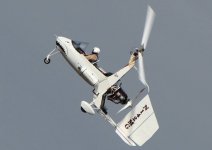The route to a safer future in the US is to have some regulatory protection/authority to stop a wilful owner/pilot from piloting a new machine too soon [and / or with little knowledge or experience] just because they can and with no real authority for those who might know better to stop them.
In my opinion Phil Bennett has made assertions about the effect of regulations in the USA that are unfounded.
I know an instructor who did not solo his client till they had over 100 hours of dual instruction.
I soloed one client at 90 hours of dual instruction.
I soloed at 54 hours of dual instruction.
I had a client Wednesday with 21 hours of dual and I was not able to solo them because they did not meet the standards despite that being our primary goal.
A flight instructor can withdraw a solo endorsement or further limit it if the instructor feels the learner is abusing their privilege.
The
MINIMUM HOURS are the minimum hours; there is no number of hours that guarantee an approval.
The examiner makes sure the minimums have been met in the log book; gives the applicant the oral test and then the examiner flies with the applicant to see that they meet the flying portion of the practical test standards.
It takes as long as it takes.
With a sport pilot add on rating it takes two Certificated Flight Instructors to agree that the learner meets practical test standards.
With Sport Pilot Gyroplane as an initial rating it takes a CFI and a Designated Pilot Examiner to approve a Sport Pilot Gyroplane rating.
A CFI has absolute discretion about when to solo someone and absolute discretion about when to approve a learner for their practical test after the learner has the minimum amount of dual instruction.
Understanding the particulars of the low G parabolic path is not a part of the practical test standards.
If I am the examiner and the applicant can’t explain why a zoom climb is a bad idea to practical test standards they do not pass until they can.
Some people feel we need a required minimum number of hours for transition training.
To me it depends on the transition, the pilot and the situation.
I would not want more regulation adding expense to the transition to a different gyroplane.
It takes as long as it takes and I feel most pilots have judgement in the USA.


